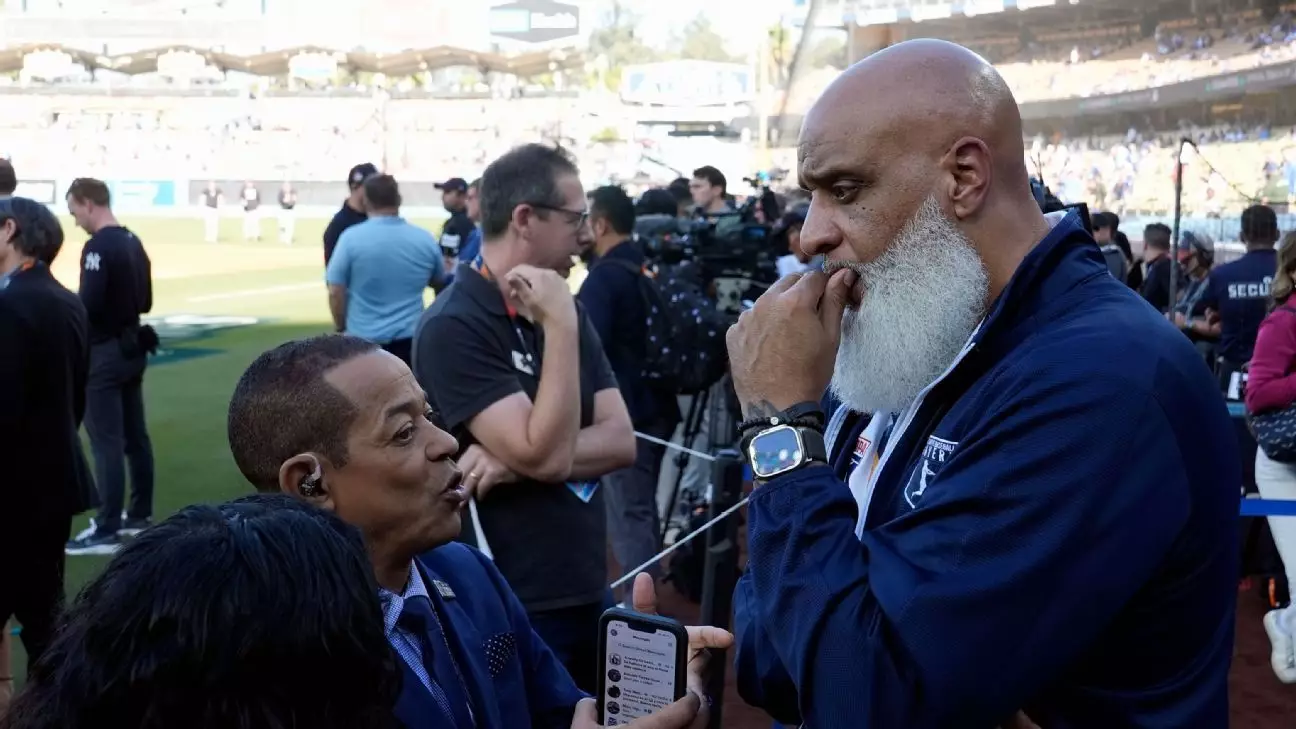The landscape of Major League Baseball (MLB) has undergone significant transformation over the past couple of decades, particularly regarding how pitchers are utilized. Recent comments from MLB Players Association (MLBPA) executive director Tony Clark have sparked a vital conversation centered around the way pitchers, both starters and relievers, are managed. His criticisms reveal much about the underlying issues regarding player health, team strategies, and the evolving philosophies of the sport.
The focus on maximizing fastball velocity and strikeout totals over innings pitched and quality starts has led to an alarming rise in injuries among pitchers. Clark’s observations at Dodger Stadium highlight the inconsistency between historical practices and current team philosophies. Traditionally, starting pitchers were expected to go deep into games, often exceeding six innings, allowing them to establish a rhythm and develop a stronger command. However, this has been eclipsed by a more aggressive, immediate-results mindset.
The pressure to perform at maximum effort for shortened appearances is not merely a function of individual players’ ambitions or work ethic. It stems from a systemic issue within team-management strategies. Teams are now emphasizing short bursts of high-intensity performance rather than the more sustainable approach of longer outings. This shift has led to an increase in Tommy John surgeries, with many pitchers undergoing the procedure multiple times, further highlighting the toll on players’ bodies.
Clark’s assertion that the teams hold primary responsibility in this situation cannot be overstated. He pointed out that players follow the directives outlined by their organizations, suggesting a disconnect between managerial philosophies and player welfare. This is a crucial factor: if teams establish a new value proposition—prioritizing efficiency over effort—the players will adjust their approaches. Thus, the initial step towards improving pitcher health lies within team culture and decision-making.
The current climate places immense pressure on pitchers to conform to an evolving norm that values short-term performance over long-term sustainability. This relentless pursuit of results can lead to superficial measures that prioritize statistical performance without considering the physiological ramifications. Unfortunately, unless organizational leaders reassess their beliefs about player utilization, the cycle of injury will likely persist.
Clark indicated that MLB has explored incentive structures to mitigate injuries and foster a healthier pitching environment. This approach, while promising, requires a paradigm shift rooted in collaboration between players and teams. Clubs must be willing to incentivize quality starts and playing deep into games rather than promoting a relentless focus on strikeouts or max-effort appearances. Only through shared goals can the MLB foster an environment where pitchers are valued for their stamina and longevity as much as their raw power.
Integrating better training regimens that emphasize biomechanics and injury prevention into team practices can lead to improved outcomes. Balancing functionality with intensity might facilitate a healthier evolution of player performance. Transitioning to this new mindset will undoubtedly take time, but the potential benefits extend beyond individual players to the entire sport.
A Look Towards the Future: Field Conditions Matter
In addition to the management of pitcher usage, the physical playing conditions also contribute significantly to player safety. Clark’s remarks regarding the new grass field in Sacramento reflect broader concerns about turf and playing surfaces. With enhanced focus on the safety of ballparks and stadiums, MLB needs to prioritize environments that reduce injury risk, especially during extreme weather conditions.
As teams and the league transition to more player-centric philosophies, it’s critical that they maintain ballpark standards that reflect the reality of modern athletic performance. Stability and safety must be priorities if leagues and teams wish to protect their players and uphold the integrity of the game.
The dialogue initiated by Clark serves as an essential step toward elevating the well-being of pitchers within Major League Baseball. Addressing the pressing issues of player health starts with team philosophies, operational norms, and even playing conditions. Transformation requires collaborative efforts among players, teams, and the league to cultivate a sustainable future for the sport. As the focus shifts from short-term metrics to long-term player health, baseball could emerge stronger, ensuring the safety and longevity of its most vital assets—its pitchers.


Leave a Reply